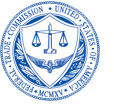Protecting Against Credit Card Fraud
Credit card fraud takes place every day in a variety of ways. You can’t always prevent it from happening, but you can create some obstacles and make it tougher for someone to get hold of your cards and card numbers. Treating your credit cards and account numbers like cash — that is, very carefully — is one way to head off potential misuse.
How Does Credit Card Fraud Happen?
Theft, the most obvious form of credit card fraud, can happen in a variety of ways, from low tech dumpster diving to high tech hacking. A thief might go through the trash to find discarded billing statements and then use your account information to buy things. A retail or bank website might get hacked, and your card number could be stolen and shared. Perhaps a dishonest clerk or waiter takes a photo of your credit card and uses your account to buy items or create another account. Or maybe you get a call offering a free trip or discounted travel package. But to be eligible, you have to join a club and give your account number, say, to guarantee your place. The next thing you know, charges you didn’t make are on your bill, and the trip promoters who called you are nowhere to be found.
What Can You Do?
Incorporating a few practices into your daily routine can help keep your cards and account numbers safe. For example, keep a record of your account numbers, their expiration dates and the phone number to report fraud for each company in a secure place. Don’t lend your card to anyone — even your kids or roommates — and don’t leave your cards, receipts, or statements around your home or office. When you no longer need them, shred them before throwing them away.
Other fraud protection practices include:
- Don’t give your account number to anyone on the phone unless you’ve made the call to a company you know to be reputable. If you’ve never done business with them before, do an online search first for reviews or complaints.
- Carry your cards separately from your wallet. It can minimize your losses if someone steals your wallet or purse. And carry only the card you need for that outing.
- During a transaction, keep your eye on your card. Make sure you get it back before you walk away.
- Never sign a blank receipt. Draw a line through any blank spaces above the total.
- Save your receipts to compare with your statement.
- Open your bills promptly — or check them online often — and reconcile them with the purchases you’ve made.
- Report any questionable charges to the card issuer.
- Notify your card issuer if your address changes or if you will be traveling.
- Don’t write your account number on the outside of an envelope.
Report Losses and Fraud
Call the card issuer as soon as you realize your card has been lost or stolen. Many companies have toll-free numbers and 24 hour service to deal with this. Once you report the loss or theft, the law says you have no additional responsibility for charges you didn’t make; in any case, your liability for each card lost or stolen is $50. If you suspect that the card was used fraudulently, you may have to sign a statement under oath that you didn’t make the purchases in question



